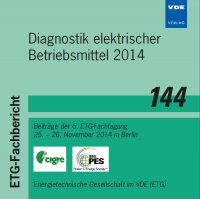A New Top-Oil Temperature Model based on IEC 60076-7 for OFAF and ONAF Transformer
Conference: Diagnostik elektrischer Betriebsmittel 2014 - Beiträge der 6. ETG-Fachtagung
11/25/2014 - 11/26/2014 at Berlin, Deutschland
Proceedings: Diagnostik elektrischer Betriebsmittel 2014
Pages: 6Language: englishTyp: PDF
Personal VDE Members are entitled to a 10% discount on this title
Authors:
Djamali, Mohammad; Tenbohlen, Stefan (University of Stuttgart, Institute of Power Transmission and High Voltage Technology, Stuttgart, Germany)
Abstract:
In order to monitor the thermal performance of power transformers, a thermal model should be integrated into a monitoring system. This model should be a simple, empirical based thermal model that predicts changes in oil temperature accurately. Regarding the fact that, the loss of life of transformer is rigorously dependent on hot spot temperature, the accurate modelling of top oil temperature is necessary. The IEC 60076-7 model is the most important and commonly accepted top oil temperature model. In order to assess the thermal behaviour of any transformer with any cooling system, this model employs several empirical factors which can be estimated based on measurement data. However, IEC model as well as other conventional models are simple so that the accuracy to predict the thermal behaviour of forced and direct cooling system is limited. In this paper, a new model for OFAF and ONAF transformers based on IEC 60076-7 standard is presented. The main contribution of this paper is to consider and to employ the heat transfer phenomenon inside transformer from bottom winding to top winding and from cooler inlet to cooler outlet of transformer with consideration of number of operating fans and pumps. To validate the model, the empirical factors are estimated in this paper based on measurements of one month and the model is tested and validated with measurements of another months. It is worthwhile to note that the inputs of the model are ambient temperature, load and number of operating fans and pumps. The results show that the model has a lower prediction error than the conventional one. Therefore, due to the simplicity and accuracy of the model, it can be used in an online monitoring system.


